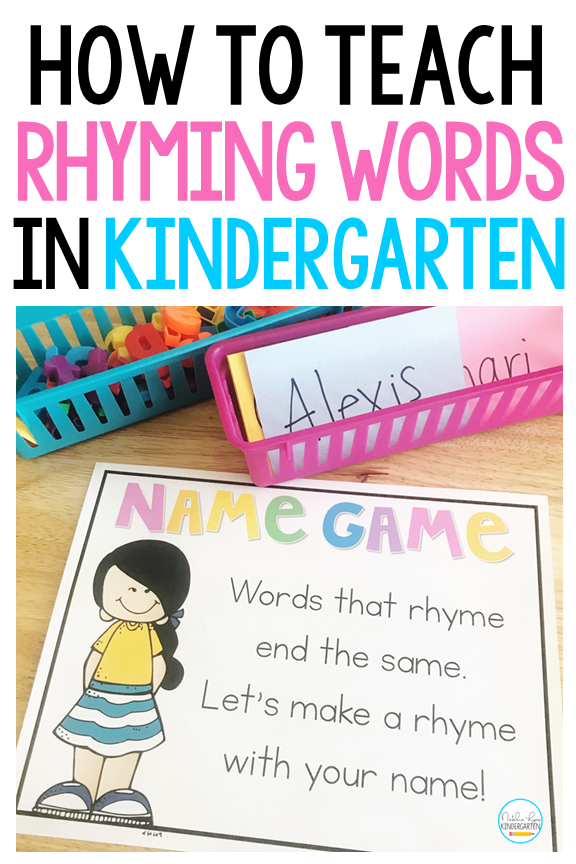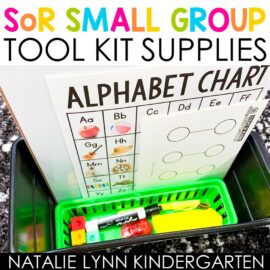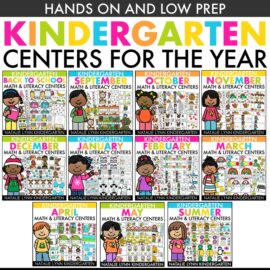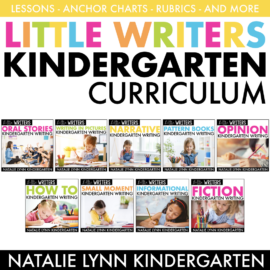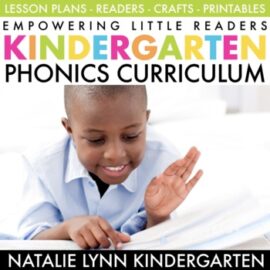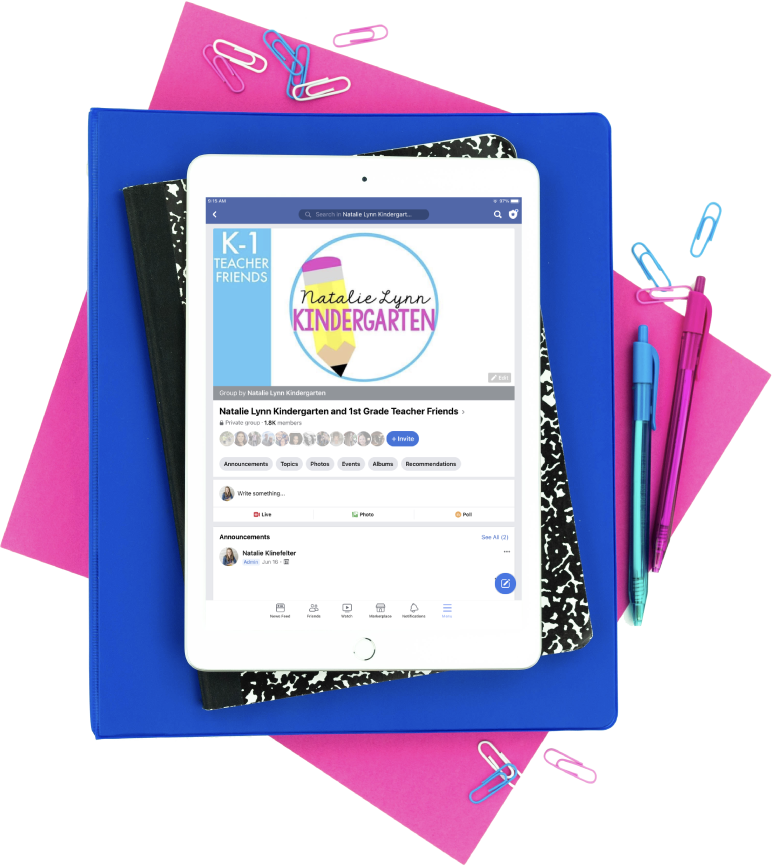
Teaching rhyming in kindergarten is so important, and yet the best way to teach rhyming words can sometimes seem like a mystery. When I first started teaching kindergarten, I had no idea how to teach rhyming words.
We know we are supposed to teach phonemic awareness, but the how is not always explicitly taught. That’s why I wanted to write a blog post walking you through the best way to introduce rhyming words in kindergarten.
Teaching Rhyming Words in Kindergarten

As you begin to plan out how you are going to teach rhyming in kindergarten, keep this rhyming progression in mind.
Students first have to be exposed to simply hearing rhymes before anything else. We often assume our students come in already exposed to rhymes and word play from being read books and nursery rhymes, but that is not always the case.
After students are exposed to hearing rhymes, they can begin to identify rhyming words. This may look like being given three words and being able to choose the two that match.
As teachers, we sometimes want to just straight to having students supply a rhyming word match, but that is actually the last step in the rhyming progression. Producing rhymes is the hardest skill and it may take our students all year to get there. That’s okay!
Teaching Students to Hear Rhymes
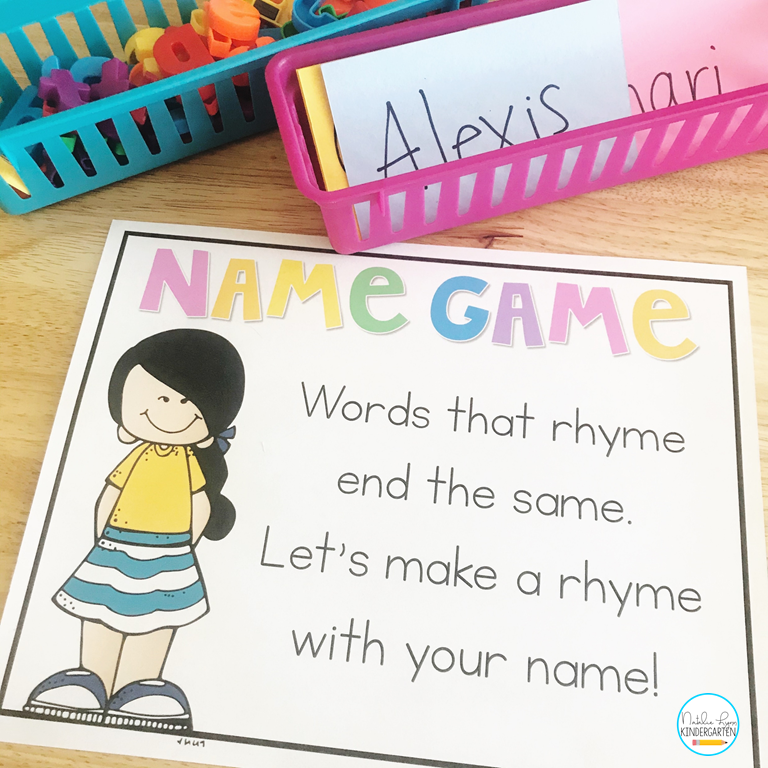
When we first begin teaching phonemic awareness, I dedicate a week or two to simply exposing students to hearing rhymes. There are a few different ways you can do this.
The Name Game
The Name Game is one of the phonemic awareness activities included in Little Reader’s September. It is a super simple rhyming words activity, but students love it!
To play this game, you will need student names written on individual note cards or sentence strips and a basket of magnetic letters.
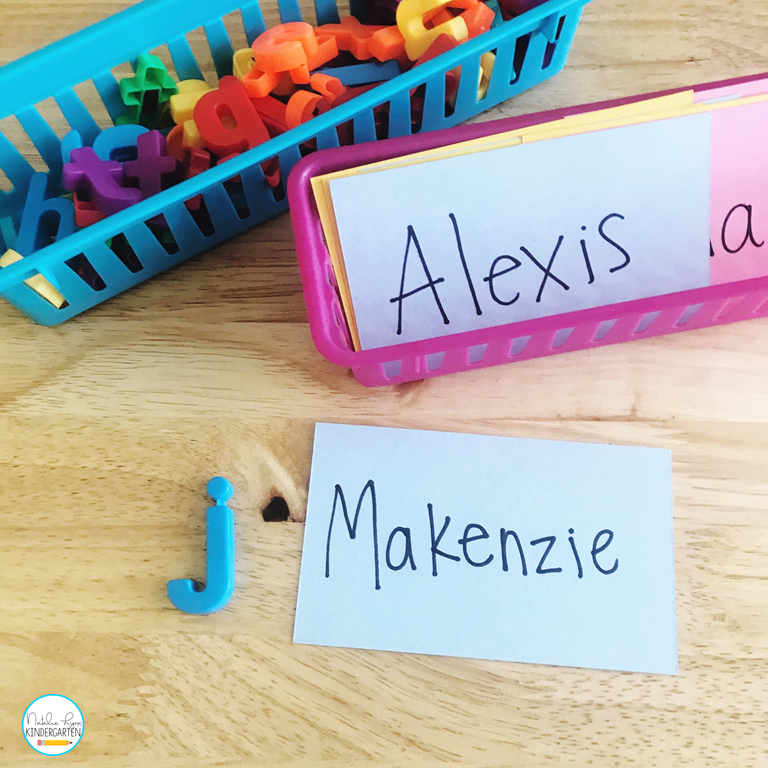
You will all say the name game poem from above. Then, you will pull out a name card and a magnetic letter. You will say the name and it’s rhyme (Makenzie Jakenzie) and then students will repeat after you.
Another teacher on Instagram said she plays a similar version – You say only the rhyming word (Jakenzie) and then the students will supply the name that rhymes (“Not Jakenzie, it’s Makenzie!”).
Nursery Rhymes in the Classroom

We often assume students are exposed to nursery rhymes at home, but that isn’t always the case. Spending a few weeks reading and playing with nursery rhymes is a great way to make sure all your students are exposed to hearing rhyming words.
You can read these nursery rhymes together, write them on sentence strips and put them in order, or search through and find the words that rhyme.
You can grab a FREE set of nursery rhymes here.
Teaching Students to Identify Rhyming Words
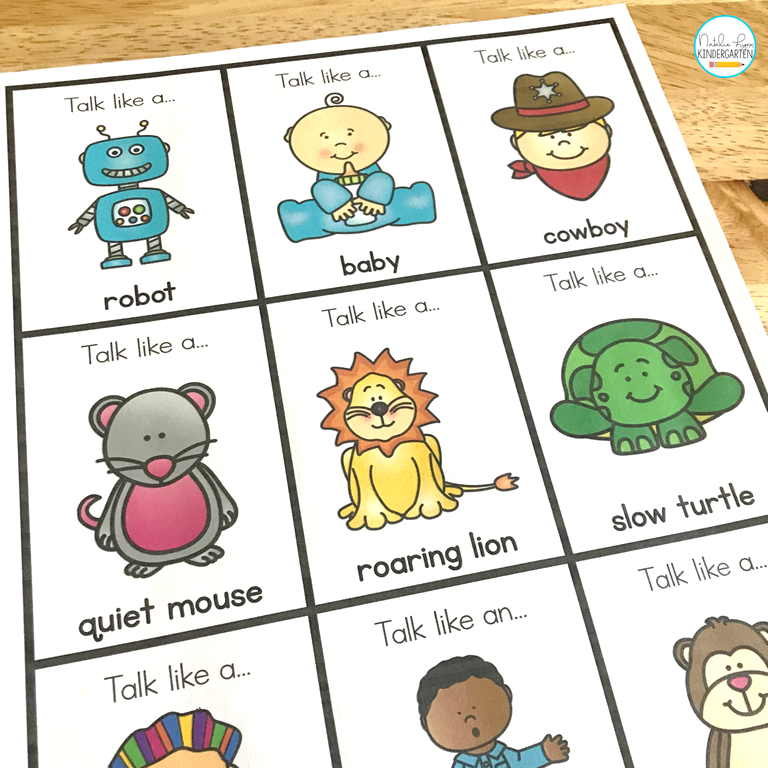
We first use these silly voices cards when we are being exposed to hearing rhymes. I will show students two pictures that rhyme and tell them the words. They will then repeat after me. Then, I will choose a silly voice card and we will say the rhyming pair in the silly voice.
When we begin identifying rhyming words, I start with just a few choices at a time and always have pictures as support. I will put up 6 picture cards that create 3 rhyming word matches. Students will help me match the rhyming pairs.
Once all the pairs are matched, we will choose a silly voice card to say the rhyming word pairs in. Simply, but they love it!
Grab the reading fluency silly voice cards for FREE here.
Pirate Rhyming Game
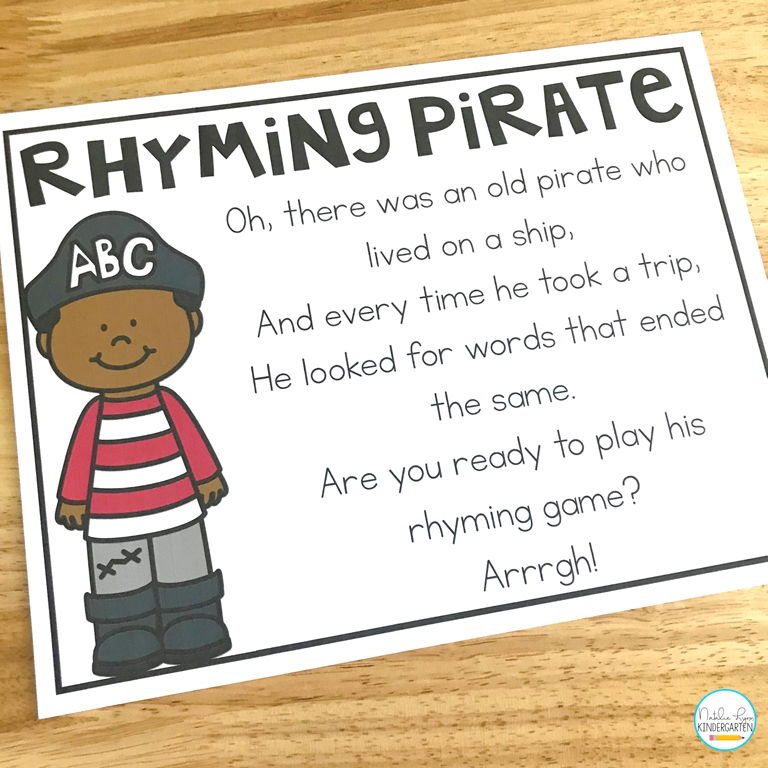
Once we have some practice identifying rhyming word pairs, we love to play this pirate rhyming game! This game is also from Little Reader’s September.
To play this game, you will have students sit in a circle and you will lay a bunch of picture cards out in the middle. Together, say the pirate rhyme and then choose a student to find a rhyming match from the picture cards. When they find a match, everyone will yell, “Arrgh! A match!”
Poems for Shared Reading

Another great way to easily practice identifying rhyming words is to have a daily shared reading time. Little Reader’s Kindergarten has weekly shared reading poems and activities included to make the most of this time.
Having a daily shared reading time in kindergarten will give your students more exposure to hearing rhymes, but you can do so much more with it!
You can have students find and highlight rhyming words together in the large poem and then have students find and highlight the same rhyming words in their poetry notebook or poem emergent reader.
You can also write the poem on sentence strips and create a poetry center. Students can put the poem in order and practice reading it with pointers for fluency.
Teaching Students to Produce Rhymes

Our rhyming assessments in kindergarten often only ask students to produce rhymes, but this skill may take the entire year to learn if your students are just now being exposed to what a rhyme is.
You can easily change up the rhyming pirate game to practice producing rhymes. Instead of having pictures out for students to match, pull out one picture card. Put on your best pirate impression and ask students if they can give you a word that rhymes with the picture.
When they do, everyone can celebrate. Arrgh! We have a match! Again, this is a simply activity, but sometimes simple is best.
Rhyming Word Trains

In my experience, finding resources to help students practice producing rhyming words can be hard! This rhyming word train activity can help.
You will show students a picture or tell them a word and they will draw it on the train engine. Then, they will draw words that rhyme on the train cars.
You can grab this rhyming words activity FREE here.
I hope you were able to take away some new ideas for teaching rhyming in kindergarten! You can also pin this post for later:
